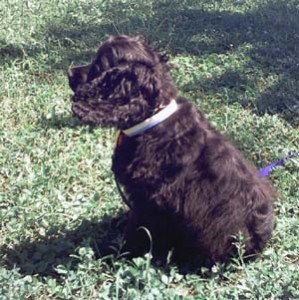Good day and welcome everyone!
This is Sharda with another Cocker Spaniel newsletter.
Today, let’s get started in training your Cocker Spaniel shall we?
COCKER SPANIEL TRAINING BOOT CAMP BASICS
Selecting a Program
Even though the English Cocker Spaniel breed is used more for hunting today than the American, its inherent breeding as a hunter makes the Cocker Spaniel relatively easy to train.
What’s great about those natural hunting instincts is that the Cocker can be trained at an earlier age than many other breeds.
The Cocker Spaniel responds better to gentle encouragement than it does to physical force, so a gentle hand is best.
The quality of learning depends on the quality of teaching. That’s a big responsibility to place on your shoulders but it’s a big deal to bring home a new dog and you certainly don’t want to be burdened with a disobedient, wild beast.
You will enjoy life with your dog much more if he masters the basics.
If it seems your commands are being ignored, give it a moment and continue trying; Cocker Spaniels can be easily distracted. If it builds to a level of frustration for you, end the session and try again later or on another day.
BASIC COCKER SPANIEL TRAINING LESSONS
- The NameBefore you can really Cocker Spaniel training seriously your Spaniel dog needs to have a name because calling him by name will be a part of the rest of his training.
Since training starts the day you get home, it is important that you have a name as soon as possible, if not before you even bring him home.
Simply use the Spaniel dog’s new name every time you interact with him and he’ll have it figured out in about three days.
- The NoChildren and puppies need to learn the meaning of “No” as soon as they enter your house. Even though you’ve puppy-proofed (you did, didn’t you?) your home as discussed in an earlier chapter, your curious pup will still find things to get into.
Every time you see him do something wrong, issue a firm, sharp “No”. If the Cocker Spaniel puppy doesn’t stop, place him in his crate for a “timeout”. If you are not using a crate, have a timeout spot in which he can be placed.
- The LeashAlthough your new Cocker Spaniel puppy will spend most of his days lumbering behind you, he must still get used to walking on a leash so that he walks well in public places.
And to make sure that you are walking him and not the other way around. The collar should fit just snug enough to fit two fingers between the collar and his neck.
Use a leash of appropriate length or a retractable version.
Hold the leash on your left (the “heel” position) and walk slowly. A Cocker Spaniel puppy has short legs and doesn’t possess that trademark speed and agility yet, so go slow.
Keep him close to your leg without letting him get under your feet. Give sufficient lead or restraint to keep him in place.
Cocker Spaniel Obedience Training
Every dog should know the basic obedience skill set. You can choose to tackle basic obedience training on your own or go off to obedience classes with your Cocker Spaniel.
If this is your first foray into training a puppy (or dog) it may be worth the reasonable fee (around $15 US per week for a 6 week session) to attend. You will gain confidence and skills you can use to train on your own for the next puppy or dog you bring home.
Your vet or AKC or other club can refer you to a reputable school. There will be classes for basic obedience, advanced socialization classes for enjoying a sidewalk café (while you go inside to order and he stays outside), and special classes for show-dog handling and perhaps other classes to suit specific needs, just ask.
I hope that you learned a lot from today’s Cocker Spaniel newsletter
All the best and take care
Warmly,
Sharda Baker

